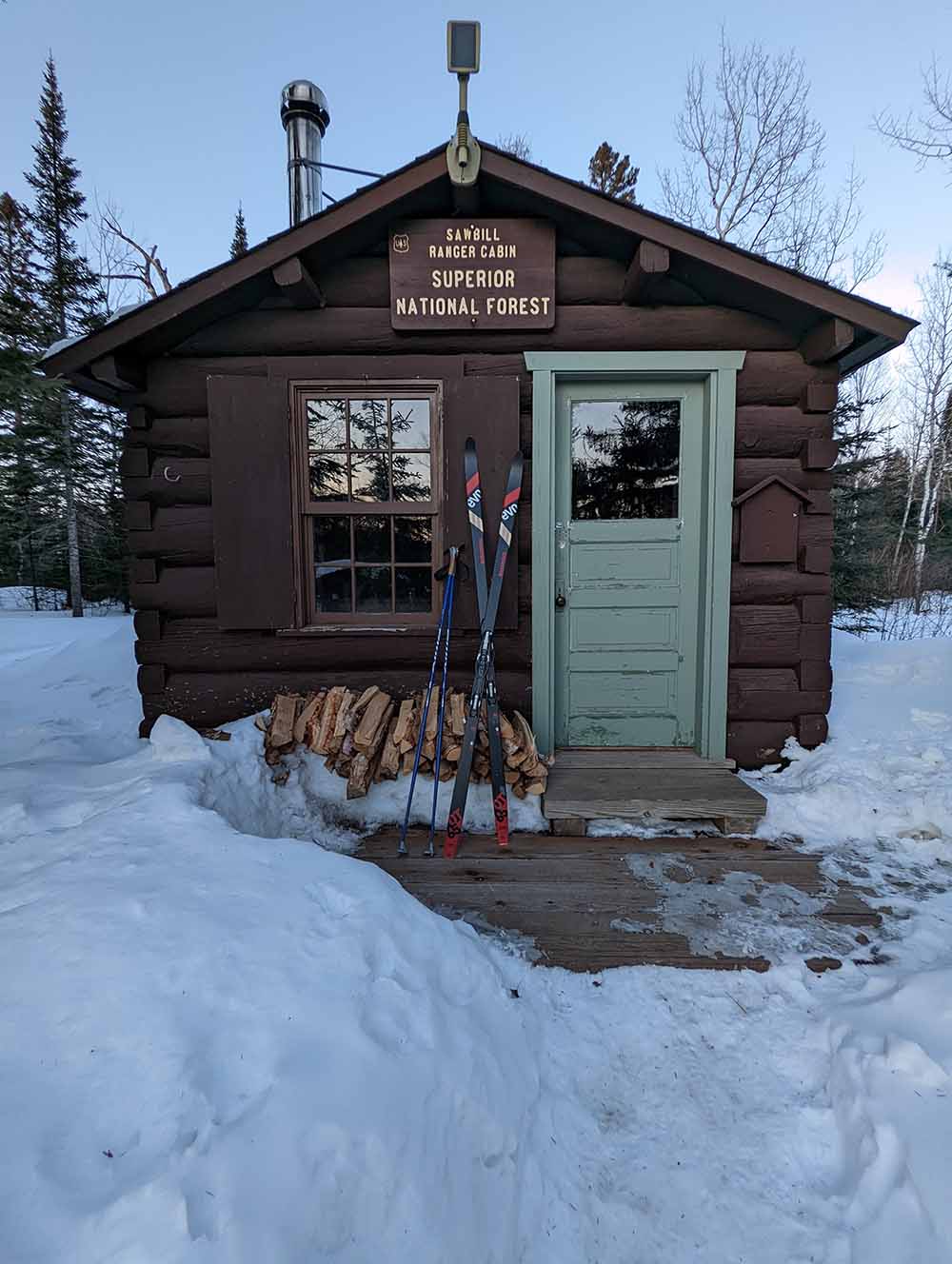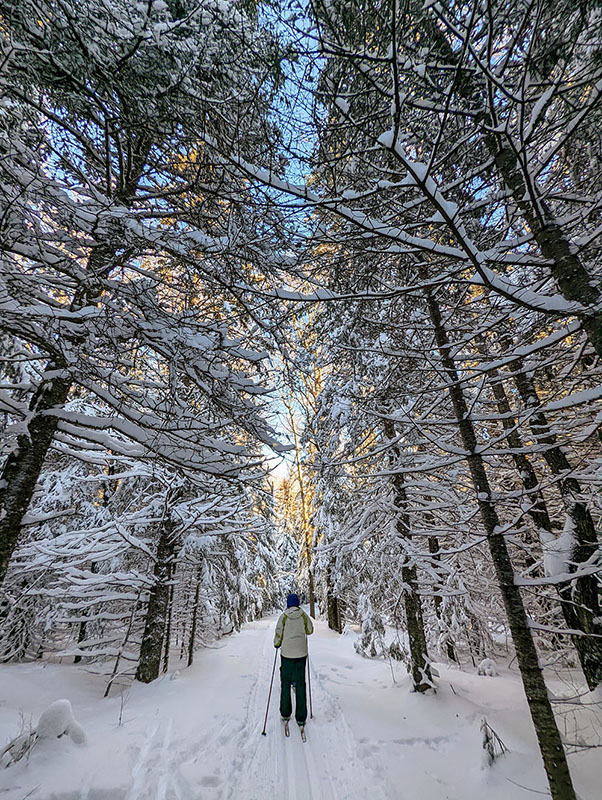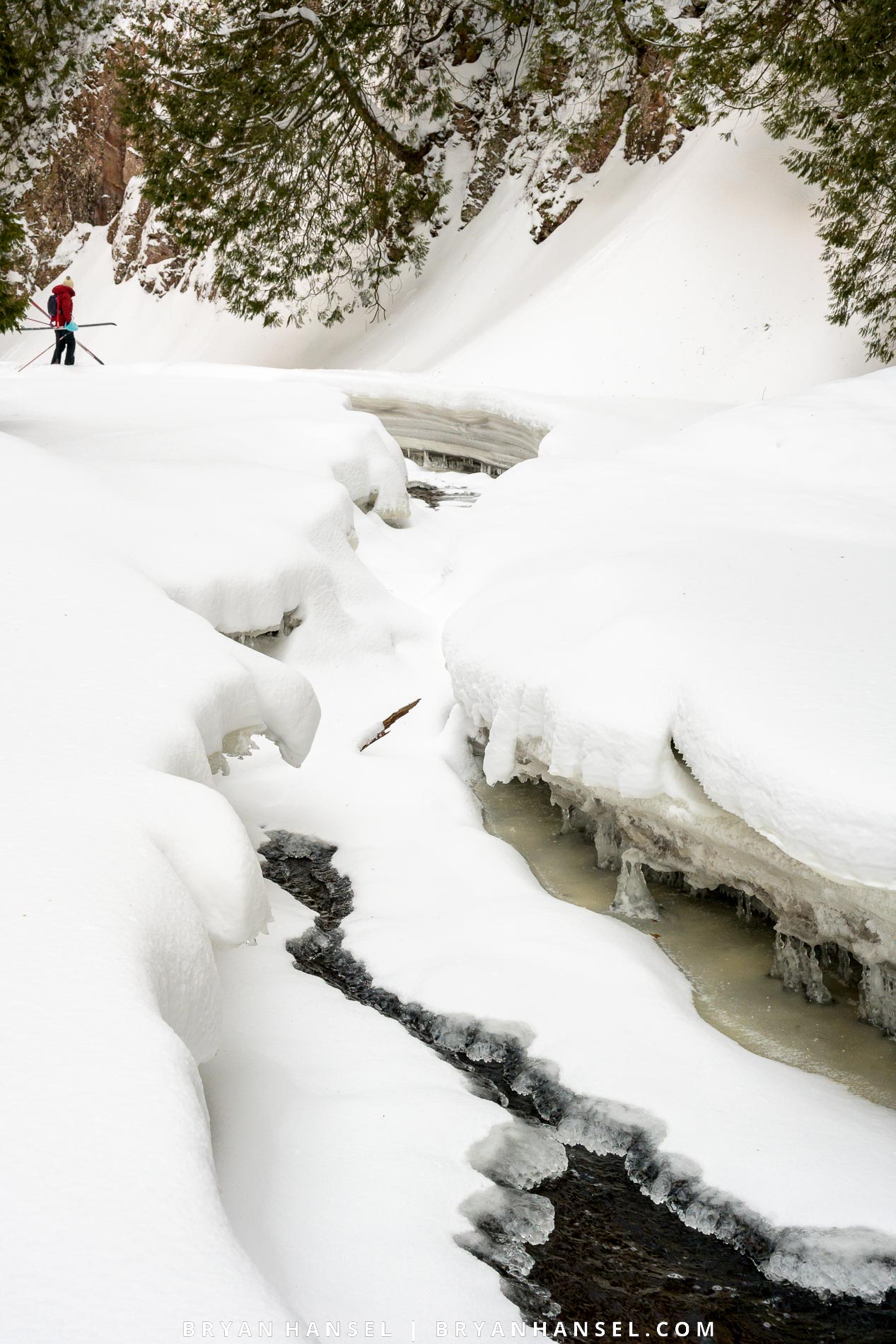XC Skiing for Paddlers • PaddlingLight.com
I remember one of my first adventures screaming downhill on a flexible flyer across an ice-encrusted snow at what seemed like breakneck speed. It thrilled my second-grade mind. Flashforward to my first experience on cross country skis. We skied from near the back door of my high school to the football field, across the practice field and straight down a steep slope. I’d never been on skis before, and it was terrifying. Eventually, I learned how to snowboard and that resulted in many trips from the Midwest to Colorado. It took until I moved to the north shore of Lake Superior before I took up xc skiing again.

Cross country skiing, or xc skiing, might be the perfect winter sport for paddlers. It engages almost the entire body in a way that paddling doesn’t. It also maintains the general overall fitness and core fitness needed for paddling. If you’re lucky enough to live in an area that gets snow in winter, then it’s a sport that you should take up. Ideally, you’ll live in an area where someone grooms trails for skate or classic skiing.
If you’ve never done it before and want to get into skiing, classic is probably the easiest way to learn. With classic, you basically sort of learn by shuffling on skis. Eventually, you start to kick and glide. When you get it right, it feels awesome.
You’ll need three things to start: skis with bindings, ski boots and poles. You want poles that come up to your armpits. Your boots should fit snuggly, but not so snug that they cut off circulation. The skis are a hard choice, because you pick them on what you want to do.

I think for most paddlers, you’ll want a relatively wide ski with some sidecut to help you turn, but you don’t want them to be too wide that they won’t fit into the groomed tracks (see the photo). Knowing most paddlers, you’ll think that you’ll also want to go off trail with them. Where I live, it’s fun but dangerous to ski the frozen rivers. It’s also common to ski into the Boundary Waters Canoe Area Wilderness. Wider skis with metal edges can be nice for trips such as those. It’s nice if they are waxless so you don’t have to deal with waxes that you’d use on groomed trails.
Two years ago, my old skis that I used for a little bit of groomed skiing, river skiing and the BWCAW kicked the bucket. The bottom delaminated off of them. Considering that they were about a decade old, I felt like I got my money’s worth. Trying to find a replacement was daunting, but I ended up finding a ski that I like better.
I ended up with the Rossignol Evo OT 65 Positrack with the bindings from an REI member special. I was actually going to recommend them on PaddlingLight last year, but they sold out so quickly. This year, they are available still. You can get them at REI.

The Evo OT 65 Positrack have a waxless base so you don’t have to worry about kick wax. They are a little wider and shorter, so they’ll be great for a beginner and they have a partial metal edge. They are actually lighter than my old Karhu Escapes which didn’t have a metal edge. While they aren’t as fast as my Rossi wax-able skis, they aren’t bad for a waxless ski. I’ve really enjoyed them and ended up liking them better than my old Karhus. I used these more than I thought last year. I always used them while coaching the grade school kids, and I ended up using them on a lot of blue kick wax days. While I always had my wax-able skis for Blue Extra days, the Evos ended up seeing more days on the snow than my fast skis. That’s says something, because I love my fast skis.
If you have ever thought about getting into xc skis, there are a lot of skis to choose from, but the Evos are a great ski to learn on and they work well for off-trail.
Things to know:
Wax, waxless or skins: All classic cross country skis need a way to grip the snow when you kick (push forward). Traditionally, this was with a kick wax matched to the temperature of the snow and air. You’d wax the center of the ski in an area called the kick pocket. Some people don’t like to wax, so they invented waxless skis. These look like they have fish scales in the center. The latest thing is to put sticky fabric skins in the kick pocket of a ski. Skins are faster than scales and don’t require wax. You still need to glide wax waxless skis.
Skis are traditionally sized by height, but it’s better to size a ski by body weight. Body weight determines if you’ll get your kick pocket off the snow while gliding and if you’ll be able to kick hard enough to push it into the snow while kicking. Some companies size using height and weight. If on the edge of a size, go smaller for ease of learning or maneuvering and longer for speed.
If you can find a lesson somewhere, you’ll get a much better grasp of the sport.
There’s a new type of binding on the market that allows you to use any boot. I’ve never used it, but it looks interesting. See: Nordic Step Bindings.
There are two common classic binding types on the market now: NNN and NNN BC. These are the standards that the xc ski industry has finally reached. The NNN BC version is beefier. You may also see three pin bindings, but they are less common now and not commonly used on groomed trails.
I could write a lot more about cross country skiing, because I love it just as much as paddling. But, I’ll leave it here. If you don’t already xc ski, you should consider it. If you do and need a new pair of do-it-all skis, I recommend the Evo 65s. I love them.
